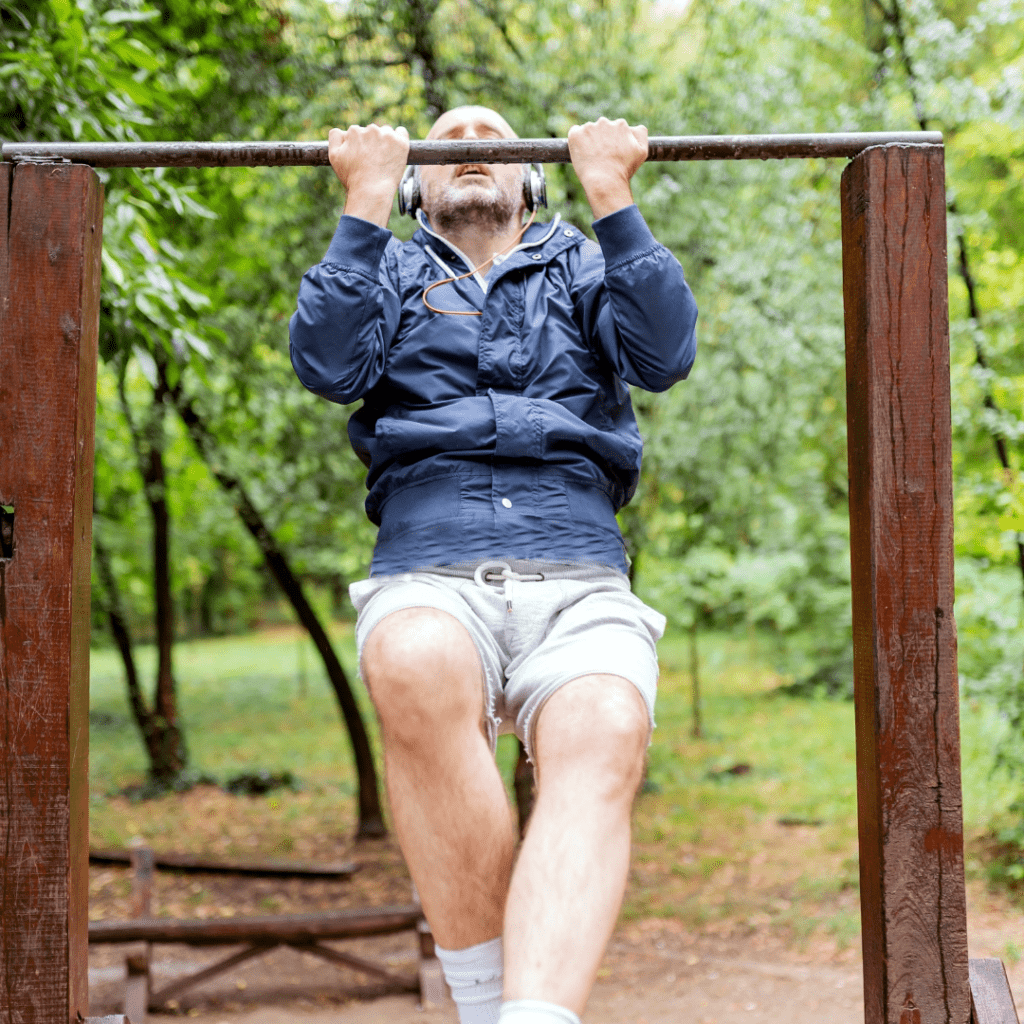Introduction
The 40s are quite challenging, especially when it comes to fitness and exercise. You might find that your body doesn’t respond to exercise the way it used to, or you have additional responsibilities that leave little time for physical activity.
However, it is important to understand that it’s never too late to start your journey towards a healthier and happier you. In fact, exercising after 40 can have many benefits for both your physical and mental health. For those over 40, regular exercise is especially important for maintaining strength, flexibility, and overall health.
If you don’t believe this, you can start your journey with some exercises for beginners and experience the difference yourself!

Changes in Strength and Coordination As We Age
As we age, our bodies undergo a number of changes that can affect our strength and coordination. One of the most significant changes is the decline in muscle mass, which can lead to a decrease in strength and swiftness. This decline in muscle mass is known as sarcopenia, and it can begin as early as our 30s. In addition to changes in muscle mass, there are also changes that occur in the brain and nervous system that can affect coordination.
| Age Range | Changes in Strength | Changes in Coordination | Effects on Mobility and Independence |
| 20-40 | No significant decline in muscle mass or strength | No significant decline in coordination or balance | No significant impairment in mobility or independence |
| 40-60 | Decline of 1-2% per year in lean body mass and 1.5-5% per year in strength | Some decline in coordination and balance due to ageing of the brain and nervous system | Some impairment in mobility or independence, especially in activities that require speed, agility, or endurance |
| 60+ | Accelerated decline in muscle mass and strength due to hormonal changes and reduced physical activity | Increased decline in coordination and balance due to ministrokes and other brain disorders | Significant impairment in mobility or independence, increasing the risk of falls, fractures, and disability |
Source:
https://www.health.harvard.edu/blog/how-to-stay-strong-and-coordinated-as-you-age-202112022651
https://www.mayoclinic.org/healthy-lifestyle/healthy-aging/in-depth/aging/art-20046070
While these changes are a natural part of ageing, there are steps you can take to maintain your strength and coordination as you get older. One of the most effective ways to do this is through regular exercise. According to a 2016 study by M. Izquierdo, et al., strength training, in particular, has been shown to be effective in building and maintaining muscle mass, improving bone density, and reducing the risk of injury. You can try different types of exercises at home, including bodyweight exercises like push-ups and squats, resistance band exercises, exercises for weight loss, and weightlifting.
In addition to strength training exercises, it’s also important that you incorporate other types of physical fitness into your exercise routine. Aerobic exercises like walking, cycling, or swimming can help you improve your cardiovascular health, while flexibility exercises like yoga or stretching can help improve your range of motion and reduce the risk of injury.
Benefits of Exercise for Staying Fit After 40
Regular exercise is essential for staying fit and healthy after 40. There are numerous benefits to incorporating exercise into your daily routine, including improved cardiovascular health, stronger bones and muscles, and better mental health. Exercise can help manage and prevent conditions such as heart disease, diabetes, arthritis, and osteoporosis. It can also help improve sleep, boost mood, and reduce stress.
If you are a beginner, it’s important to start slowly and gradually increase the intensity of your workouts to avoid injury. A daily exercise routine that includes a combination of cardio, strength training, and flexibility exercises can help you stay fit and healthy after 40.
Regular exercise has also been shown to improve cognitive function and brain health in older adults. A study published in the Journal of Applied Physiology found that regular aerobic exercise can help improve cognitive function and brain health in older adults.

Pro Tips for Exercising After Your 40s
When considering types of exercises to stay fit after 40, it’s important to incorporate a variety of workouts into your daily exercise routine. This can include strength training, aerobic exercises, and flexibility exercises. Each type of exercise offers unique benefits and contributes to overall physical fitness.
Strength Training
Strength training for older adults is particularly beneficial as it helps combat the loss of muscle mass that occurs with age. It can be done at home using bodyweight exercises or with the use of resistance bands or weights.
Aerobic Exercise

Aerobic exercises, like walking and swimming, are also important for cardiovascular health. These types of exercises can be easily incorporated into a daily exercise routine and can be done at home or in the local neighbourhood. In addition to improving cardiovascular health, aerobic exercises also help to maintain a healthy weight and improve mental health.
Flexibility Exercise
Flexibility exercises, such as yoga or stretching, are also important for maintaining range of motion and preventing injury. These exercises can be particularly beneficial for those experiencing anxiety, as they often incorporate breathing exercises for anxiety that can promote relaxation and stress relief.
Conclusion
Regular exercise is essential for staying fit and healthy after 40. There are many benefits to incorporating exercise into your daily routine, including improved physical and mental health. A combination of strength training, aerobic exercises, and flexibility exercises can help individuals stay fit after 40.
Exercise after 40 can be a rewarding and life-changing journey. You can achieve and maintain your fitness goals well into your 40s and beyond by assessing your fitness level, setting realistic goals, selecting the right exercises, and developing a sustainable routine.
Overall, regular exercise is essential for staying fit and healthy after 40. With the right approach and a consistent exercise routine, it’s possible to stay fit and healthy at any age.
